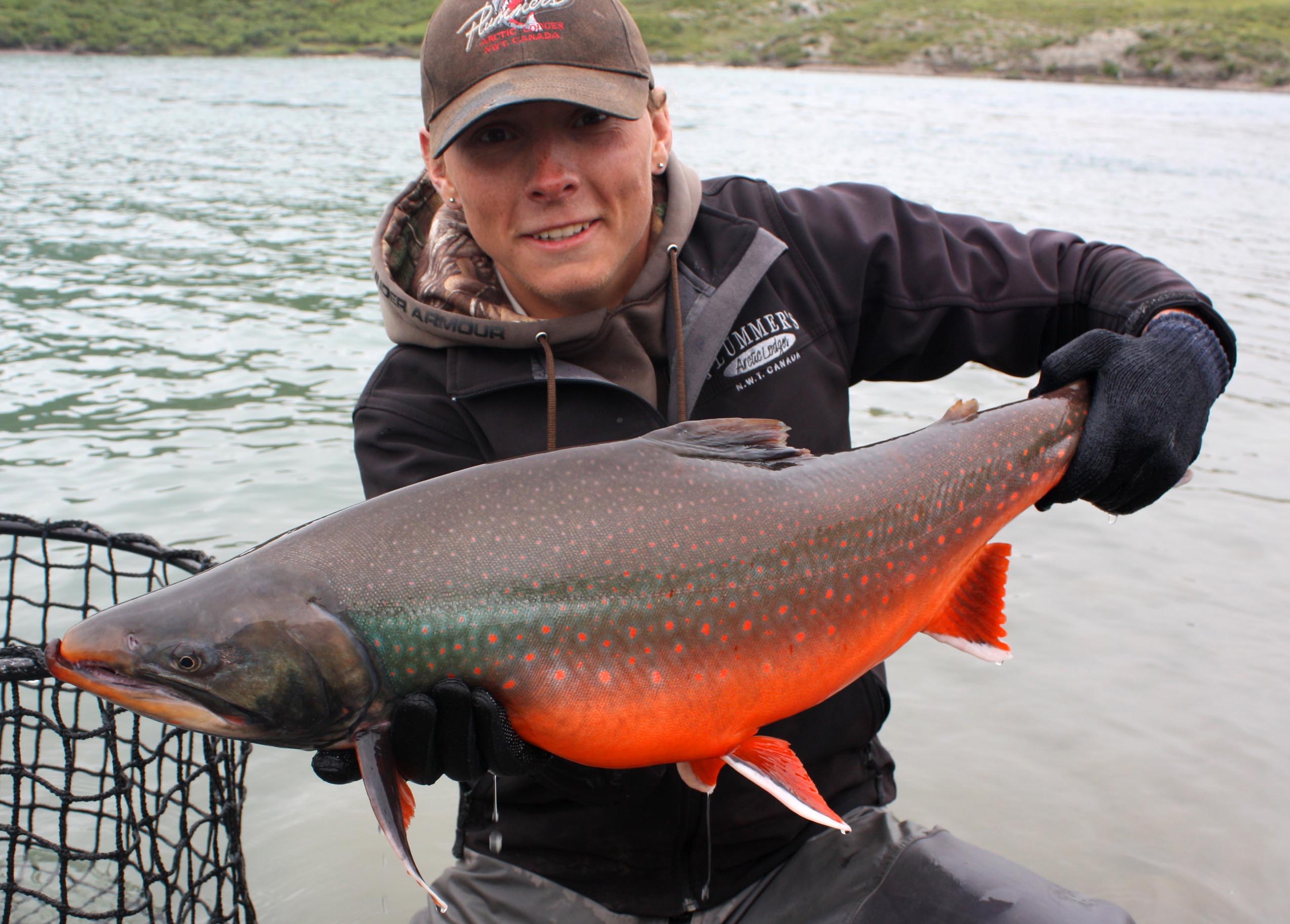Plummer's Blog

Presenting your fly to the char

Every autumn I am compelled to reflect on my summer at Tree River and compare the good days to the bad ones. Contrary to popular belief, I spend a considerable amount of time in the off season weighing the good days against the bad ones looking for answers to the question “Why the fish weren’t biting?”
John Hazel, veteran steelhead guide on the Deschutes River in Oregon, defines successful steelhead fishing as “fishing good water, well”. Steelhead, like other salmon and char, do not feed on their spawning migration once they return to freshwater from the ocean. However, when the water conditions are right and the mood suits them, these fish will hit a well presented fly.
Keeping in mind this idea of “fishing good water, well”, it becomes clear that success on the Tree during the tough days is dependent on a combination of targeting good water, and presenting the fly to the fish effectively. Just like the most eager fish will ignore a poorly presented fly, an empty pool will not produce a fish, no matter how perfectly the fly drifts through it. As well, there are those days that an individual fish will refuse a well presented fly even in the most ideal water conditions. This is probably why guides like to emphasize that it’s called “fishing”, not “catching”.
Over the years of fishing the Tree and other rivers for char, trout and salmon, I have come to realize that proper presentation is one of the most critical elements to fishing success. The next time the fishing gets tough on the Tree, here are a few guidelines to follow that will better your odds of taking a fish.
- Adapt and improvise – the Tree is a varied river with long, deep runs as well as short, fast pockets. Having the right fly line that will present your fly to the fish properly, without getting hung up on boulders or drifting over their heads is crucial to angling success on the Tree. The fly angler should be prepared with a variety of sink-tip fly lines which are appropriate for the water conditions. Several multi-tip fly lines are available on the market today; I recommend the Rio Versi-tip line which comes with five interchangeable 15’ tip sections ranging from full floating to ultra-fast (Type 8) sinking. Tips 15’ or shorter are ideal for the Tree because they allow the angler to control the depth and speed of the fly without constantly hanging up on the bottom. Work with your guide to decide the best tip length and sink rate to present your fly to the fish effectively for a given piece of water.
- Watch your shadow – It happens to all of us; in hopes of getting a better look at the fish holding in a run, we walk a little too close, entering the fish’s view abruptly or casting a shadow over them, causing them to spook and flee the pool. Once a char is spooked, there is no chance of getting the fish to take. Some would argue otherwise, but my experience has led me to accept that a spooked fish will never be a hooked fish. Because of this, anglers should select a vantage point that does not cast their shadow over the pool. If such a point does not exist, make sure to move slowly into position. Gradually entering a fish’s view will allow you to appear as part of the bank side surroundings and is less likely to spook the fish.
- Present your fly, not your leader – Much like your shadow being cast over a fish’s back will spook them, your line or leader passing over their backs will do the same. If you’re sight casting to a particular fish, make sure that you place the fly upstream of the fish so that the fly passes naturally into the fish’s view. Putting the fly directly on the fish’s nose will most likely startle the fish and cause it to spook. After the fly hits the water, make an upstream mend of the fly line; this will allow the fly to sink and start drifting downstream before the line and leader. A poorly placed cast with no mend will result in the current pulling your fly line downstream over the fish before the fly. As the current continues to pull the belly of the fly line, the fly begins to accelerate downstream near the surface. The fish never gets to see the fly because it is whistling over their heads and never in view long enough to induce a take. Mending your fly line will help to control the speed and depth of your fly. Follow the line with your rod tip and allow the fly to pass through “the zone” naturally.
- You can’t make a fish bite, so keep moving – the Tree is a fast flowing, high gradient river. The quality holding water is not that hard to find, but if it doesn’t produce a fish in the first few casts, it probably isn’t going to. That being said, make sure those first few casts are good ones. Remember, “Fishing good water, well”. Paying attention to the previous three guidelines is helpful, but only before you make your first cast. Ignoring the water conditions, the sun’s position and the placement of your first cast, will almost certainly result in putting a fish down. But then again, if taking all those things into consideration still doesn’t produce a take, move on to the next pool, it’s not going to happen.
- Bring your 6-weight and dry fly box – the Tree is renowned for its massive sea-run char and all of those who visit have the goal to catch one. However, there is also a world class dry-fly fishery on the river. During mid-July and into August the mayfly hatches reach epic sizes and rival those of rivers further to the south. Resident lake trout and char ranging in size from 2-6 lbs gobble up these emerging aquatic insects with reckless abandon. To ignore this phenomenon is almost a sin. While searching for a tippet-class record this past summer with Australian fly fisherman, Frank Bluch, we decided on a slow afternoon to target these fish. When everything was said and done, Frank had brought over half a dozen lake trout to the bank on his 3-weight fly rod. The fish ranged in size from 3-6 lbs and put up a great scrap on the light rod. So when the char fishing goes in the tank don’t frustrate yourself, string up the trout rod you stowed in your luggage for grayling and begin to cover the risers. You won’t be disappointed!
Remember to accept that success depends on fishing good water, well and to take the necessary steps to accomplish that. As mentioned before, you can’t make a fish bite, but you can certainly better your odds by following these guidelines to effectively present your fly to the char.
I look forward to seeing you on the Tree next summer where we can put these guidelines into practice. To all of you who I had the pleasure of guiding this past summer, thank you for making it one of my best summers on the Tree yet.
Tight Lines,
Trevor Nowak

More News


